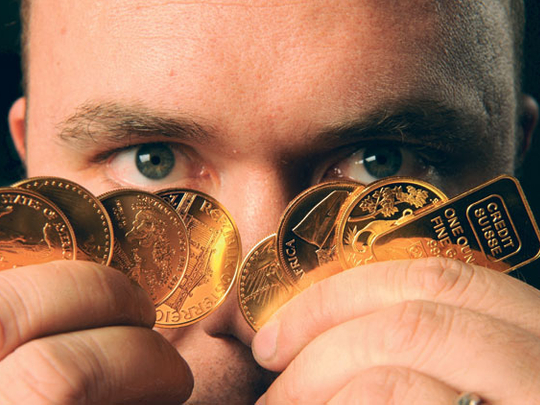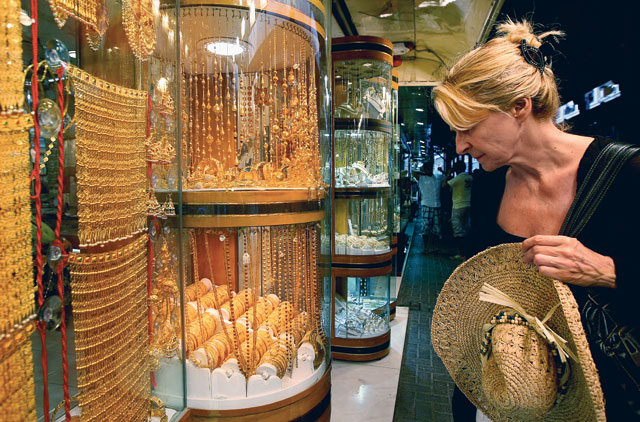
With gold prices scaling new highs with impunity every other week or so and retail sales holding up well in spite of that, one would have thought it was a season of sparkle and shine for Dubai's jewellery trade.
Right? Not so if one scratches below the surface.
While retailers are not exactly complaining, those who are thinking beyond the short-term do have concerns. Industry insiders are quick to point out that the octane-charged gold price gains of late did not automatically translate into higher margins for them.
The reason is the way retail profit margins have historically been fixed within Dubai's gold jewellery trade, which forms the benchmark for the UAE and the Gulf markets.
Instead of margins being set on a percentage basis — which incidentally is the way the gold jewellery trade operates in all of the other markets — in Dubai these are based on a "per piece" basis, which is the sum of the board rate plus the making charges for that particular piece of jewellery. The board rate is decided by the Dubai Gold and Jewellery Group, and within it is fixed the margins for the retailer, (which works out to a few dirhams).
"This method did serve its purpose in the past but is now archaic," said a senior industry source who declined to be identified. "There's no way the gold jewellery trade in Dubai can operate healthily without dropping it at some point in the future. It was all fine when gold prices were at certain levels and we had the massive volumes to compensate for everything. Now, with gold heading higher, any slip in the volumes the trade sells would have a major impact on margins and the way we do business."
The retailer has a point. His cost base — and those of the wider jewellery retail sector — has been on a continual increase, as related to the cost of buying the metal and transforming it into fine jewellery.
Then there were the mounting expenses associated with the running of a retail network, the paying of staff, and marketing. "Buyers at the jewellery outlets are not aware of all this," the retailer said. "Their only consideration is the price of gold on a particular day. But operating on a fixed-margin basis is proving quite a constraint on the retail trade overall, and it's time this was changed."
It's not just the rising costs that are forcing the retailers' hands. There is also pressure from manufacturers to do something on the margin side.
Solutions
If margin setting is done on a percentage basis, retailers believe their bases will be better covered.
Their margins change proportionately to the way gold prices move.
But making a change to the way margins are decided is not going to be easy, more so in such a traditional area as the gold trade.
Serious efforts to take this up at the Gold And Jewellery Group meetings have so far led nowhere as no consensus could be reached.
"If a decision to change to a percentage basis is made, there has to be a consensus, or at the very least all of the major players should sign up," said another retailer. "Even if a few of the major retailers refuse, there is no way a change can be affected as this may be used as a competitive tool to say one retailer is selling his merchandise at a higher price. It could lead to discord within the trade."
It's plain enough to see why a consensual approach may not work.
There are as many as 1,000 retailers in the gold jewellery space, and the smaller ones used to a certain way of doing business may have no compunction to seek any change.
This is why the leading players have to come together to make a strong pitch to carry the majority along with them.
Determined efforts are continuing, and with a new board coming soon to the Gold And Jewellery Group, many industry insiders believe the changes are more possible at this time than they ever have been before.
The new board, featuring 12 elected members and representatives from the Dubai Chamber of Commerce and Industry and the World Gold Council, will sit for a two-year term.












